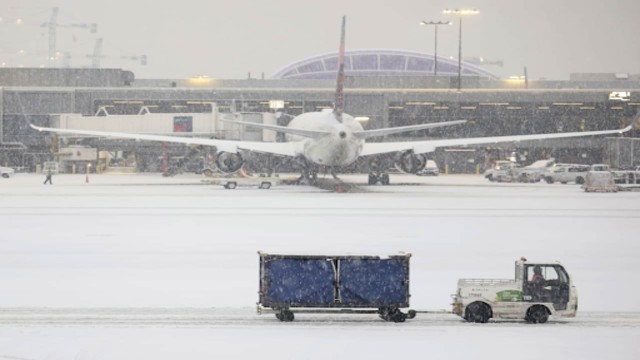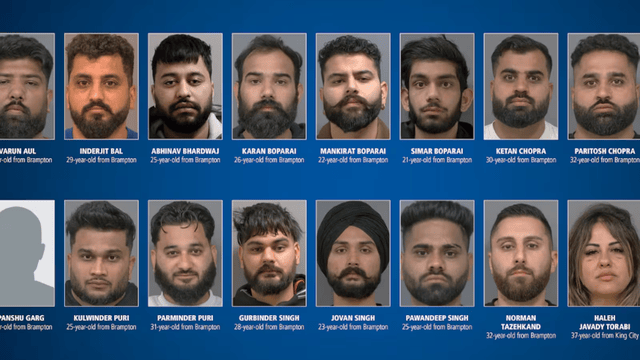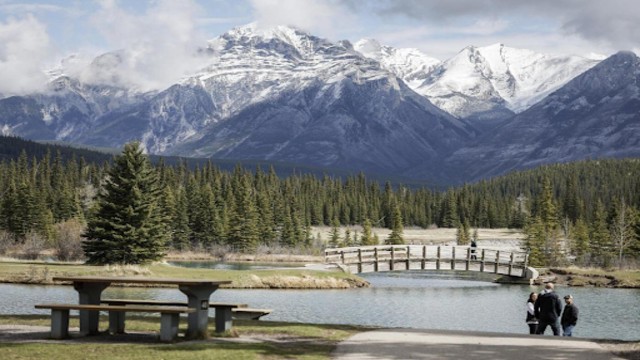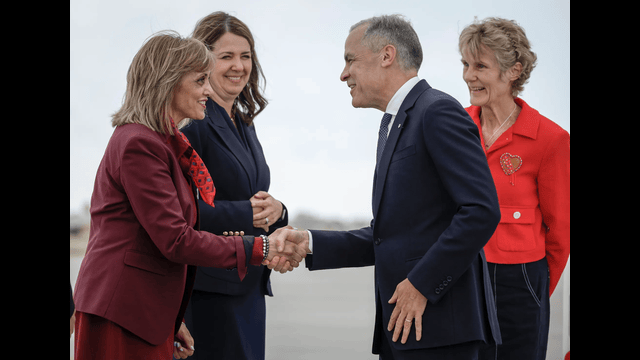
More than 3,000 flights have been canceled, leaving many travelers stranded, while thousands are also facing power outages. Getty Images
A powerful winter storm has gripped the southern United States, bringing heavy snow, sleet, and ice, causing widespread disruptions across the region. The storm, which began impacting the Plains earlier in the week, intensified on Friday, wreaking havoc with transportation, power supply, and daily life.
The storm’s effects were felt in many southern states, where snow blanketed areas like Memphis, Nashville, and parts of Georgia and Texas. In the Southeast, cities such as Atlanta saw a mix of snow and sleet, marking their biggest snowfall in nearly seven years. For many, this was far from a winter wonderland. Snow accumulation in some places, including Oklahoma and Arkansas, ranged from 6 to 10 inches, with more than a foot of snow falling in central Arkansas. Meanwhile, northern Texas, including the Dallas-Fort Worth area, recorded up to 8 inches of snow, making this storm the heaviest the region has experienced in four years.
The storm’s impact extended beyond just snow. By Friday evening, over 135,000 homes and businesses across Georgia, Texas, and Arkansas were left without power due to the freezing temperatures and icy conditions. Georgia, in particular, experienced the highest number of outages.
With hazardous road conditions resulting from ice and snow, travel quickly became dangerous. In Texas and Oklahoma, there were numerous reports of jackknifed trucks and cars stuck on highways. On Interstate 35 in southern Oklahoma, a crash led to a complete shutdown, turning the road into a parking lot. Over 500 traffic accidents were reported by Oklahoma Highway Patrol on Thursday, including several with injuries.
To assist with the chaos, National Guard units were activated in Arkansas, and multiple warming centers were opened in Georgia. However, even with these preparations, travel remained treacherous, with state officials in Alabama reporting impassable roads and closed city streets. Neighboring Mississippi also experienced multiple accidents and slide-offs.
Atlanta, where icy sleet fell Friday morning, faced a particularly difficult situation. The city was expected to receive between 1 to 3 inches of snow and sleet. As temperatures dropped below freezing in the evening, roads were expected to freeze again, causing even more travel issues. Governor Brian Kemp of Georgia mentioned the lessons learned from the infamous 2014 "Snowpocalypse," ensuring that preemptive steps like treating 20,000 miles of roadway with brine had been taken. Still, traffic continued to deteriorate, with more than 1,000 calls related to accidents and weather conditions.
The winter storm also caused massive disruptions in air travel, with over 3,000 flights canceled across the United States on Friday, making it the worst day for flight cancellations since July. Atlanta’s Hartsfield-Jackson International Airport, one of the busiest in the world, was heavily affected, with 56% of departing flights canceled by the afternoon. American Airlines’ hubs in Charlotte and Dallas also saw significant cancellations.
Looking ahead, the storm is expected to continue spreading snow and ice through the Southeast and the Mid-Atlantic. North Carolina, which is still recovering from the effects of Hurricane Helene, braced for 1 to 3 inches of snow, with more expected in the mountains. In Kentucky, Missouri, and Illinois, 1 to 3 inches of snow were expected to accumulate by Friday night, while the Northeast prepared for similar conditions.
This powerful winter storm continues to disrupt daily life across the South and beyond, with travel delays, power outages, and hazardous road conditions expected to persist.















